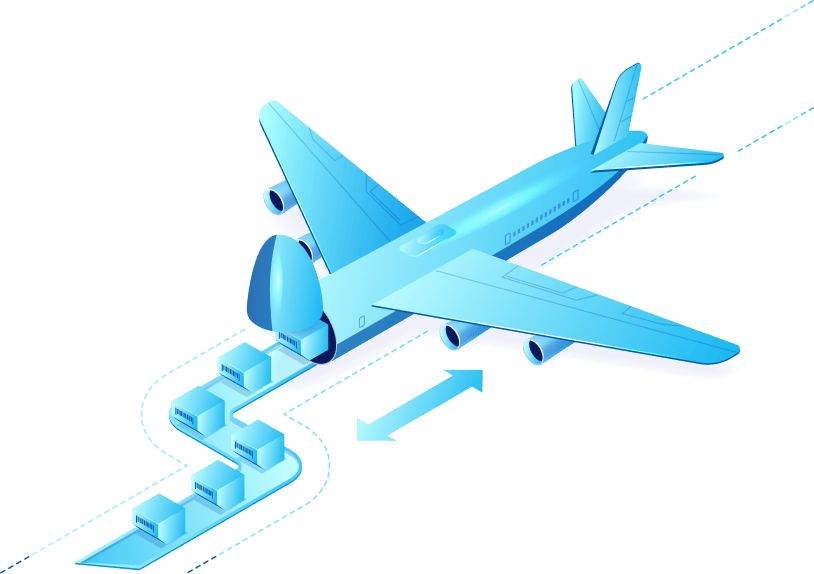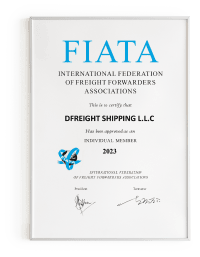Air Freight to Chile
Air Freight to Chile
Fast, Reliable, and Efficient Air Freight to/from Chile
DFreight Air Freight Service is your top choice for swift and dependable air cargo shipping to/from Chile. For a variety of commodities, including perishable goods, healthcare supplies, electronics, machinery, or anything that demands fast delivery from Chile to the UAE and vice versa, we’ve got you covered. With years of expertise, comprehensive solutions, a commitment to on-time delivery, cutting-edge technology, top-notch security, competitive pricing, and a global reach, we’re here to make your airfreight experience seamless and worry-free. Trust DFreight for excellence in air shipping and submit your inquiry right away to receive the best competitive prices for your air cargo to/from Chile.

ChileExports and
Imports
The top exports of Chile are Copper Ore, Refined Copper, Fish Fillets, Raw Copper, and Iron Ore, exporting mostly to China, United States, Japan, South Korea, and Brazil.
The top imports of Chile are Refined Petroleum, Cars, Crude Petroleum, Broadcasting Equipment, and Delivery Trucks, importing mostly from China, United States, Brazil, Argentina, and Germany.
Market Update
According to OEC, in 2021, Chile was the number 41 economy in the world in terms of GDP, the number 39 in total exports, the number 45 in total imports, the number 51 economy in terms of GDP per capita and the number 74 most complex economy according to the Economic Complexity Index.
Chile exported US$279.43 Million during 2021 to the United Arab Emirates and imported US$111.66 Million during 2021 from the UAE, according to the Trading Economics database.
The Chile–UAE freight market is projected to grow significantly by 2023, with increasing connectivity of both countries and rising exports of perishables such as fresh fruits and vegetables from Chile to the UAE. In addition, the UAE is increasingly diversifying its import sources to include countries beyond its traditional trading partners, making Chile an attractive destination for both imports and exports. With increased flow of goods between the two countries, logistics providers are looking to increase their services to accommodate the rapidly growing market demand.
Banned Products
In Chile, certain products are banned from being imported due to safety or health concerns. These include food items such as raw, fresh beef, as well as some food–related items such as kitchen knives and tableware. Other banned items include certain types of wood, animals and animal products, plastics and certain plant–based products from outside South America. In addition, all drugs, firearms and ammunition are strictly prohibited from being imported into Chile.


Documents & Customs Clearance
One thing to take into account when exporting cargo internationally is customs clearance. You must be aware of the customs clearance regulations of the destination countries when shipping cargo from Chile.
The following documentation must be given to local customs for international shipments by the supplier, consignee, or intermediary:
– A commercial invoice
– A packing list
– A bill of lading
– A certificate of origin
Shipping Different Commodities from/to Chile
How to Ship Frozen Food: An Ultimate Guide
How to Ship Computer Parts From China
How to Ship Machinery to the UAE
Major Air Cargo Port
-
Italy
Germany
United Kingdom
Netherlands
France
Turkey
Spain
Denmark
Switzerland
Czech Republic
Hungary
Poland
Romania
Greece
Portugal
Slovakia
Sweden
Ireland
-
China
India
Taiwan
Hong Kong
Japan
Singapore
South Korea
Malaysia
Qatar
Indonesia
Saudi Arabia
Thailand
Bangladesh
Lebanon
Kuwait
-
Uganda
Congo
Egypt
Rwanda
Kenya
South Africa
Morocco
Algeria
-
-
-


We consolidate cargo from Germany, Belgium, France, Luxembourg, and nearby cities to Amsterdam, then ship it directly to Dubai.
Certificates & Memberships




- Stress-Free Documentation We simplify the paperwork process, making it easy for you to focus on what matters most – your shipment.
- Clear Cost Breakdown Our pricing is straightforward, with a detailed breakdown so you can see exactly where your money goes.
- Dedicated Support We’re just a click away. Your dedicated support team is there to address any questions or concerns promptly.
- Live Shipment Tracking Easily follow your ocean and air freight shipments 24/7 with real-time tracking. No more unexpected delays.
Ship Your Cargo with Ease
Get Started Today!
Why Choose Consolidated Air Freight?
Guaranteed Space
Secure your cargo space without worries.
Reliable Scheduling
Count on our reliable predictive schedules
Nationwide Collections
We pick up your cargo throughout Benelux and Germany
Regional Trucking
Benefit from local trucking within Europe and GCC
Competitive Pricing
Enjoy market-competitive air freight rates
Fast Delivery
Rapid and secure shipping for time-sensitive items
Regional Trucking
Benefit from local trucking within Europe and GCC
Competitive Pricing
Enjoy market-competitive air freight rates
Fast Delivery
Rapid and secure shipping for time-sensitive items
Guaranteed Space
Secure your cargo space without worries.
Reliable Scheduling
Count on our reliable predictive schedules
Nationwide Collections
We pick up your cargo throughout Benelux and Germany
Any Questions?
Reach out to us, and our experts will work with you to discover the tailored solution you need.





 Germany
Germany Netherlands
Netherlands Luxemburg
Luxemburg Belgium
Belgium





